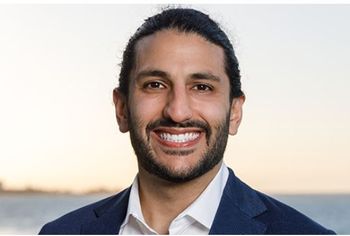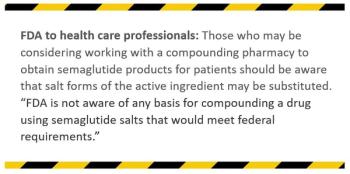
No-Scalpel Vasectomy
Vasectomy is a safe and effective form of sterilization that about half a million men in the United States undergo each year.1 Dr Li Shun-Quiang first introduced the no-scalpel technique of vasectomy in China in 1974.
Vasectomy is a safe and effective form of sterilization that about half a million men in the United States undergo each year.1 Dr Li Shun-Quiang first introduced the no-scalpel technique of vasectomy in China in 1974. Use of the dissecting forceps allows entry through the skin without a scalpel, expedites the removal of the connective tissue around the vas deferens, and results in less trauma.
Here we review the basic steps of the no-scalpel vasectomy. While the fundamentals are universal, many variations of the procedure exist.
PREOPERATIVE COUNSELING
During the preoperative visit, determine whether the patient is fully informed and certain about his decision and assess the suitability of the anatomy for the procedure. Emphasize the permanent nature of a vasectomy, because reversal is only about 50% successful depending on the time frame (more successful if reversed within the first 3 years).2
Reproductive history. Include the number of children the patient fathered and his current relationship status. Ask the patient whether he may want to father more children in the future. Counseling should include discussion of sperm banking, because 6% of men who have had vasectomy ultimately request reversal.3 Including the spouse or partner in the discussion is helpful. Also inquire about any prior surgery or trauma to the scrotum.
Anatomy examination. Confirm the presence of vas deferens bilaterally. Note any old scars, inguinal hernias, hydroceles, varicoceles, spermatoceles, testicular pain, or signs of infection (orchitis or epididymitis). Make sure both vasa can be manipulated anteriorly to guarantee ease of grasping. If there is any obstructive pathology, or if the anatomy is unfavorable, we refer the patient to a specialist for further evaluation.
Review of procedure and complications. This is best accomplished using an anatomical drawing of the male reproductive tract. The main complications are bleeding, infection, and failure to accomplish sterility. The incidence of complications has been shown to depend on the experience of the physician but is probably well under 5%.1 Antibiotic prophylaxis is not routinely recommended. Bleeding risk partly depends on the patient’s level of physical activity after the procedure.
Advise patients that persistent pain from vasectomy is extremely rare. In addition, vasectomy does not affect the volume of semen produced or libido and does not lead to a dangerous “congestion of sperm” in the testes. The sperm are reabsorbed naturally into the body. Links between vasectomy and testicular or prostate cancer have not been substantiated.
Informed consent. After preoperative counseling, the patient should sign a sterilization consent form.
PATIENT INSTRUCTIONS AND PREPARATION
Have the patient shave the scrotum and thoroughly cleanse the area before arrival and bring a supportive undergarment, such as an athletic supporter. Shaving with hair clippers is prudent because use of a straight razor may increase the risk of postoperative infection. The patient should arrange for a ride home after the procedure.
Keep an electrocautery unit available to achieve hemostasis and for vas ligation. With the patient in a supine position, retract the penis cephalad. Apply an antiseptic to the scrotum and surrounding area and attach a fenestrated drape to the scrotum. Confirmation of anatomy should be done before initiating the procedure.
ANALGESIA AND ANESTHESIA
Strategies to Enhance the Effectiveness of the Vasal Nerve Block
•From the patient’s right side (if right-handed), inject 1% plain lidocaine to form a skin wheal at a point-roughly two-thirds the way up from the distal scrotum to the base of the penis (preferably on the median raphe if attempting only one puncture site).
•Mark the needle puncture site with a skin marker or by lightly nicking the skin several times with the tip of the needle.
•Manipulate the vas to the area of the skin wheal using both hands. Try to “walk the vas” underneath the skin, without releasing it with more than one hand at a time, to prevent it from slipping away.
•Sequester the vas, using the 3-finger grasp, and carefully insert the needle cephalad to a depth of 1 to 1.5 inches within the perivasal sheath (Figure).
•Inject 2 to 5 mL of lidocaine around the vas without moving the needle.
•Repeat the process on the opposite vas through the same midline skin wheal.
•Keep a lidocaine injection readily available in case additional anesthesia is needed.
Figure – A vasal nerve block is being administered to the patient’s left vas deferens; the right vas was previously anesthetized. This demonstrates the “back-handed” 3-finger grasp to sequester the vas on the side opposite from the physician.
Most patients tolerate the no-scalpel vasectomy well with only local anesthetic. Oral diazepam taken 1 hour before the procedure can help the patient relax. Strategies to maximize the effectiveness of the vasal nerve block are listed in the Box. Both vasa can be anesthetized through a single site on the median raphe. If the anatomy prohibits mobilization of the vas to the midline position, the procedure may be performed through both sides of the scrotal skin, as was done on the patient illustrated here.
An alternative way to administer anesthesia for vasectomy is a relatively new “no-needle” technique, which uses a high-pressure lidocaine spray delivery device. This method has been shown to decrease the pain of local anesthesia from a 2 to a 1 on a visual analog pain scale of 10. However, the clinical significance of this is debatable.4
GRASPING THE VAS
Grasping the vas is often the most difficult part of the procedure. The vas differs from blood vessels and connective tissue in that it is firm and tubular and feels like al dente spaghetti. It may be prudent to start with the vas that seems most difficult to mobilize. If after further manipulation the vas cannot be well positioned for the vas clamp, the patient can be referred to a specialist.
Once the vas is aligned underneath the skin wheal, switch from using 2 hands to a 3-finger grasp before applying the ring-tipped fixation clamp (Figure 1). With the tip of the vas clamp, palpate the scrotum to reconfirm the location of the vas and then apply the clamp with a firm
Figure 1 – The 3-finger grasp, in which the thumb and index finger are aligned with the middle finger below, helps isolate the vas during the administration of a vasal nerve block and the application of the vas clamp.
downward motion against the skin and vas. Keeping the middle finger underneath the scrotum is extremely important because it traps the vas against the clamp (
Figure 2
). Lowering the table and “leaning into it” may help. Try not to grasp too much surrounding tissue; this will lead to unnecessary blunt dissection later. This step often determines whether anesthesia is adequate or whether additional lidocaine is needed. One way to bypass thick skin or a “tight” scrotum is to make an initial puncture before introducing the clamp.
After the vas is clamped, elevate the handle of the clamp with one hand (Figure 3). With the other hand, palpate the full length of the vas in each direction to confirm which vas has been grasped. You can also ask the patient if he feels pressure more on his right or left side. Double and triple checking the side of the grasp is essential to avoid mistakenly clamping and ligating the same vas twice. The vas should be palpable near the skin surface and within the ring of the clamp. If too much tissue has been grasped, the clamp can be reapplied to more cleanly isolate the vas bundle.
Figure 2 – A vas clamp is applied to the connective tissue around the right vas with a firm downward motion and plenty of counter pressure from the middle finger behind the scrotum.
Figure 3 – After grasping the vas, the clamp is elevated. This pulls the skin taut so that on palpation of the scrotum you can confirm whether the vas has been cleanly grasped.
Figure 4 – Here the medial blade of the dissecting forceps is inserted just cephalad to the vas clamp. To guide the forceps into the vas bundle, you can rest the instrument on the thumb of the left hand that is holding the vas clamp.
Figure 5 – By spreading both blades of the dissecting forceps within the puncture site, the connective tissue is removed and the vas is revealed.
To puncture the skin and connective tissue down to the vas, we use the medial blade of the dissecting forceps (
Figure 4
). Blunt dissection of the connective tissue can be accomplished by removing the single blade and then inserting and opening both blades through the same puncture site (
Figure 5
). This puncture and spreading technique may be repeated several times until the dull white vas emerges from the connective tissue. Be sure to cauterize any bleeding that may occur. Try to avoid unnecessary cautery of the skin edges. Having an assistant blot any blood immediately before cauterization will better reveal the source of bleeding.
Figure 6 – After piercing the vas with the far tip of the dissecting forceps blade angled down, the hand holding the forceps is supinated (so that the forceps blade is angled up) to raise the vas out of the skin.
Figure 7 – Grasping the exposed vas is a challenging part of the no-scalpel vasectomy. The vas clamp around the connective tissue is released and then quickly reapplied to the exposed vas with one hand, while the other hand holds the dissecting forceps with the vas. When done successfully, the vas will look like an upside-down U.
Figure 8 – To avoid blood vessels running along the vas, further blunt dissection with gauze may be needed (A). Two hemostats may be applied to the perivasal tissue to keep the loop from slipping back under the skin (B).
Once visible, the vas can be grasped with the dissecting forceps. With the forceps tips angled down, skewer the vas with the blade farthest from you and gently close the tips. To raise the vas out of its sheath, turn your right (dominant) hand clockwise so that the forceps tips are angled up (
Figure 6
) and simultaneously remove the vas clamp with your left hand. This allows the vas to emerge from the skin opening with the dissecting forceps. Then quickly regrasp the vas with the vas clamp in your left hand (
Figure 7
). The vas should be elevated from the skin hole in an upside-down U. To prevent losing the vas while loosening and regrasping it with the vas clamp, keep tension on the vas with the tip of the dissecting forceps. Further blunt dissection may be attempted with gauze to remove perivasal tissue; before ligation, 2 hemostats may be applied to the perivasal tissue to keep the vas from slipping back under the skin (
Figure 8
).
5
LIGATION
Various methods have been described for ligation of the vas.6 Here we illustrate the traditional suture ligation and excision technique, which is the most common method used worldwide.1 However, this method is associated with a higher failure rate that is thought to be caused by necrosis distal to the ligatures and subsequent recanalization of the exposed ends. Hemoclip ligation and excision, fascial interposition, and intraluminal cautery that extends at least 1 cm into 1 or both vasa are associated with less recanalization and higher success; however, these techniques may require additional equipment or cautery tips that are not readily available. We often incorporate interposition-the more cost-effective technique.
Figure 9 – Here a window at the apex of the vas loop is created with the dissecting forceps.
Figure 10 – Each end of the exposed vas loop is tied with an absorbable suture of choice. There should be at least 1 cm between the knots.
Figure 11 – The segment of vas is excised with care not to cut too close to the suture knot. Leaving at least 2 mm beyond the ligature can prevent the suture from slipping off.
With the dissecting forceps, we create a loop through the perivasal tissue between the elevated proximal and distal segments of vas, then tie each end with an absorbable suture (leaving at least 1 cm between the knots) and remove the segment with scissors (Figures 9, 10, and 11). The excised segment can be sent for pathological examination to confirm that it is the vas deferens. Be sure to elevate the cut ends of vas and their connective tissue to ensure hemostasis on each side and cauterize areas of bleeding as needed. The vas can be allowed to slip back into the scrotum. We repeat the process on the opposite vas, ideally, through the same midline puncture. If we are unable to manipulate the opposite vas to the same hole, we anesthetize and puncture a second area of the scrotum to complete the procedure.
CLOSURE
The skin of the scrotum, with its many folds, is very forgiving. We usually let the small puncture heal by secondary intention. If the hole is gaping, we may use interrupted or continuous percutaneous stitches; however, a simple subcuticular stitch with absorbable suture may suffice. The dressing, which consists of antibiotic ointment and a stack of gauze, is securely held in place by the patient’s supportive undergarment.
AFTERCARE AND FOLLOW-UP
Recommendations for postoperative care vary. We prescribe strict rest for 48 hours and no heavy exertion, exercise, or weight lifting for 1 to 2 weeks. Acetaminophen and cold compresses are usually sufficient for pain control. NSAIDs are not recommended for the first 2 days because of increased bleeding risk. A follow-up visit in 1 week may be prudent to ensure that the level of postoperative pain and tenderness is appropriate and to check for infection. Hematomas rarely occur if careful hemostasis is done at the end of the procedure. When present, they are usually managed conservatively.
Sterility is typically confirmed 3 months postoperatively, although an earlier sample may be obtained after 6 weeks and at least 15 ejaculations. Patients must use back-up contraception until sterility is confirmed. Persistent presence of motile sperm requires that the vasectomy be repeated. The finding of rare, nonmotile sperm after 3 months is associated with successful sterilization.1
References:
REFERENCES:
1.
Sandlow JI, Winfield HN, Goldstein M. Surgery of the scrotum and seminal vesicles. In: Wein AJ, Kavoussi LR, Novick AC, et al, eds.
Campbell-Walsh Urology
. 9th ed. Philadelphia: Saunders; 2007:1098-1109.
2.
Belker AM, Thomas AJ Jr, Fuchs EF, et al. Results of 1,469 microsurgical vasectomy reversals by the Vasovasostomy Study Group.
J Urol.
1991;145:505-511.
3.
Potts JM, Pasqualotto FF, Nelson D, et al. Patient characteristics associated with vasectomy reversal.
J Urol.
1999;161:1835-1839.
4.
White MA, Maatman TJ. Comparative analysis of effectiveness of two local anesthetic techniques in men undergoing no-scalpel vasectomy.
Urology.
2007;70:1187-1189.
5.
Pfenninger JL, Fowler GC, eds.
Procedures for Primary Care Physicians.
St Louis: Mosby; 1994:520-540.
6.
Dassow P, Bennett JM. Vasectomy: an update.
Am Fam Physician.
2006;74:2069-2074.
Newsletter
Enhance your clinical practice with the Patient Care newsletter, offering the latest evidence-based guidelines, diagnostic insights, and treatment strategies for primary care physicians.

















































































































































































































































































